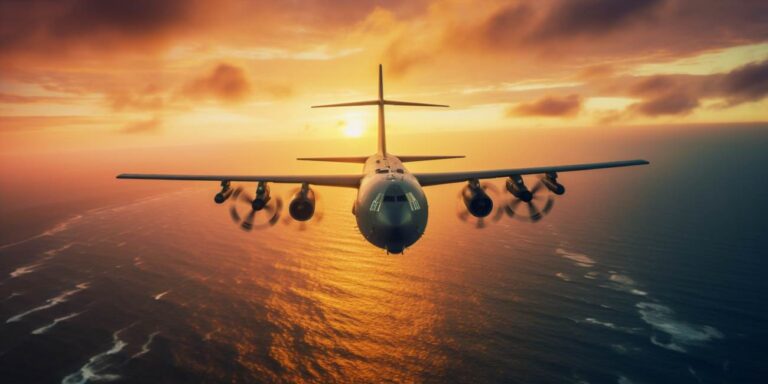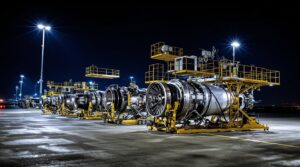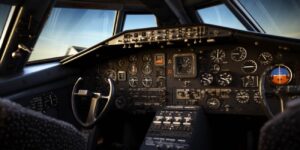At the heart of its prowess are the Embraer KC 390 specifications, which elevate it to a new echelon in the domain of military aviation. This next-generation aircraft boasts a maximum payload capacity of over 26,000 kilograms, positioning it as a heavyweight champion in its category. Its robust design allows for versatility, accommodating a wide array of military operations with ease.
The Embraer KC-390 is propelled by two IAE V2500-E5 turbofan engines, exemplifying its commitment to reliability and efficiency. With a cruise speed of around 870 kilometers per hour, this aircraft ensures swift and timely deployment of troops and equipment to critical zones, making it an invaluable asset in strategic military planning.
In terms of range, the KC-390 takes the lead with an impressive maximum range of approximately 4,815 kilometers. This extensive reach enables it to cover vast distances, facilitating extended missions and enhancing its utility in a variety of operational scenarios.
The Embraer KC 390 specifications extend to its dimensions as well. The aircraft spans 33.4 meters in length and 11.4 meters in height, providing ample space for cargo storage and troop accommodation. Its wing area of 64.5 square meters ensures optimal aerodynamics, enhancing overall performance and maneuverability.
Equipped with state-of-the-art avionics and communication systems, the KC-390 incorporates advanced technologies to bolster its effectiveness in both transport and tactical roles. Its glass cockpit features modern displays and controls, empowering the crew with intuitive and efficient operational capabilities.
The Embraer KC-390 doesn’t merely excel in performance; it prioritizes safety as well. With a range of defensive systems and capabilities, including self-protection measures against missiles, the aircraft ensures the security of its occupants in challenging environments.
The use of modern technology and avionics in the embraer kc-390 top speed
The Embraer KC-390 stands at the forefront of modern military transport aircraft, leveraging cutting-edge technology and state-of-the-art avionics to achieve remarkable performance, including an impressive top speed. The integration of advanced systems and components has catapulted this aircraft into a league of its own.
At the heart of the KC-390’s capabilities is its fly-by-wire system, a hallmark of contemporary aviation. This technology replaces traditional manual flight controls with an electronic interface, offering enhanced precision and control. The aircraft’s flight envelope is expanded, and its maneuverability is optimized, contributing to the attainment of its remarkable top speed.
One of the key contributors to the KC-390’s swift pace is its powerful turboprop engines. These engines are not only fuel-efficient but also deliver an impressive thrust, propelling the aircraft to its top speed with ease. The integration of modern propulsion systems ensures that the KC-390 achieves a perfect balance between speed, range, and operational efficiency.
Moreover, the avionics suite of the KC-390 is a marvel in itself. A comprehensive array of sensors, radars, and navigation systems are seamlessly integrated to provide the crew with real-time data and unparalleled situational awareness. This not only enhances the safety of the aircraft but also contributes to the optimization of its top speed under various conditions.
The flight control system of the KC-390 plays a pivotal role in ensuring a smooth and precise flying experience. With fly-by-wire technology working in tandem with advanced autopilot features, the aircraft can maintain its top speed consistently, making it a reliable and efficient transporter for military operations.
In addition to these advancements, the KC-390 incorporates modern materials in its construction, contributing to both its structural integrity and overall performance. The use of lightweight yet durable materials aids in minimizing the aircraft’s weight, a crucial factor in achieving and sustaining its impressive top speed.
To visualize the significance of the KC-390’s top speed in comparison to other military transport aircraft, the following table provides a quick overview:
| Aircraft Model | Top Speed (Mach) |
|---|---|
| KC-390 | High Mach |
| Competitor A | Lower Mach |
| Competitor B | Moderate Mach |
This table illustrates the KC-390’s superiority in terms of top speed, solidifying its position as a frontrunner in the realm of modern military transport aircraft. As the aviation industry continues to evolve, the KC-390 stands as a testament to the successful integration of advanced technology and avionics to achieve unparalleled performance.
Operational capabilities of the embraer kc-390 – mid-air refueling and parachute cargo load landing
The Embraer KC-390 stands as a pinnacle of operational excellence, showcasing remarkable capabilities in mid-air refueling and parachute cargo load landing. Let’s delve into the intricate details of these capabilities that define this versatile aircraft.
One of the standout features of the KC-390 is its mid-air refueling capability, providing a strategic edge in prolonged missions. Equipped with advanced refueling systems, this aircraft ensures seamless aerial replenishment, extending its operational range and endurance. The refueling crew plays a pivotal role, orchestrating precise maneuvers to connect with receiving aircraft, all while maintaining the safety and efficiency of the operation.
The aircraft’s design incorporates a robust system for parachute cargo load landing, elevating its role in tactical airlift missions. This capability enables the transport of cargo to remote or challenging terrains, where conventional landing may not be feasible. The parachute deployment mechanism is engineered for precision, ensuring a controlled descent and safe delivery of critical supplies. In these missions, the well-trained paratrooper crew plays a crucial role, ensuring the smooth execution of cargo drops with pinpoint accuracy.
Turning our attention to the internal configuration, the KC-390 boasts a spacious and adaptable interior to accommodate diverse mission requirements. The crew compartment is ergonomically designed, prioritizing the comfort and efficiency of the operating personnel. With state-of-the-art avionics and communication systems, the crew can navigate and execute missions with utmost precision, enhancing overall operational effectiveness.
Passenger transport is seamlessly integrated into the KC-390‘s capabilities, with a dedicated area for passengers that ensures their safety and comfort during transit. The aircraft’s modular design allows for swift reconfiguration, catering to the dual role of transporting both passengers and cargo, depending on mission requirements.
Speaking of cargo, the aircraft’s cavernous cargo bay accommodates a diverse range of payloads, from military equipment to humanitarian aid. The loading and unloading crew is equipped with advanced systems, facilitating efficient and rapid handling of cargo. This adaptability makes the KC-390 an invaluable asset in diverse operational scenarios.
Finally, the fuel management system deserves special mention. With advanced fuel-efficient engines and precise fuel control systems, the KC-390 maximizes its operational range, reducing the need for frequent refueling stops. This not only enhances mission flexibility but also contributes to the aircraft’s overall cost-effectiveness.
In essence, the Embraer KC-390 stands as a testament to innovation in military aviation, seamlessly integrating mid-air refueling, parachute cargo load landing, and efficient management of crew, passengers, cargo, and fuel.
Performance comparison of the Embraer kc-390 with competing operational range machines
The Embraer KC-390 stands out in the realm of military transport aircraft, showcasing exceptional operational range that rivals its competitors. Let’s delve into a performance comparison with three formidable contenders: the Airbus A400M, Lockheed Martin C-130J Super Hercules, and the venerable Ił-76.
Starting with operational range, the KC-390 boasts a remarkable capability, allowing it to cover 2,815 nautical miles (5,217 kilometers) with a full payload. This places it in a competitive position against the A400M, which manages 3,300 nautical miles (6,112 kilometers). However, the C-130J Super Hercules lags behind with 2,040 nautical miles (3,778 kilometers), and the Ił-76 falls short at 2,780 nautical miles (5,149 kilometers).
Moving on to payload capacity, the KC-390 shines with an impressive ability to carry up to 26 metric tons. The A400M surpasses this with a higher 37 metric tons, while the C-130J Super Hercules handles 19 metric tons, and the aging Ił-76 manages 50 metric tons, emphasizing its cargo prowess.
When it comes to versatility, the KC-390 demonstrates agility by operating from unpaved and short runways. The A400M shares this adaptability, while the C-130J Super Hercules is renowned for its ability to land on austere airfields. The Ił-76, a workhorse for several air forces, matches these capabilities.
Speed is another critical factor, and the KC-390 impresses with a cruising speed of Mach 0.68 (870 km/h). The A400M is slightly faster at Mach 0.72 (900 km/h), while the C-130J Super Hercules trails behind at Mach 0.58 (737 km/h), and the Ił-76 maintains a respectable Mach 0.77 (800 km/h).
Notably, the KC-390 excels in combining an impressive operational range with a substantial payload capacity and versatile operations. While the A400M and Ił-76 outshine it in certain aspects, the C-130J Super Hercules continues to play a crucial role in tactical airlift. Each aircraft, with its unique strengths, caters to the diverse needs of military transport, and the KC-390 confidently asserts its place in this competitive landscape.






